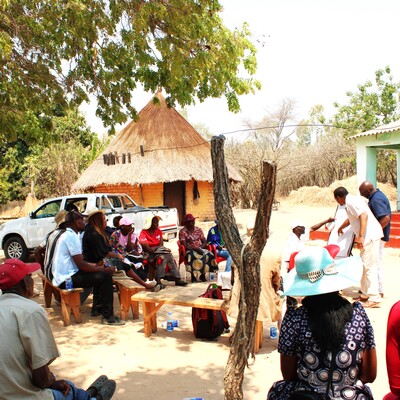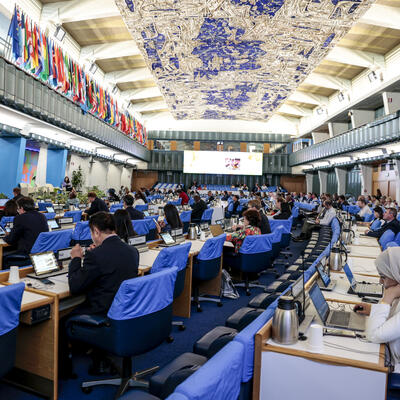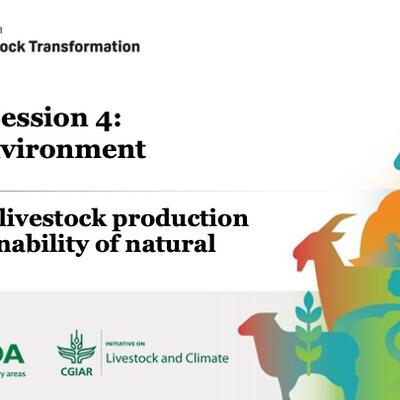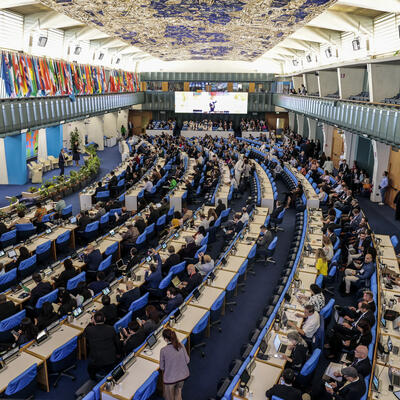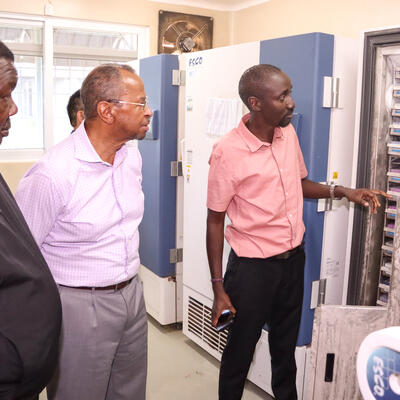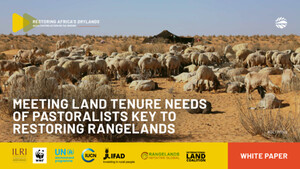
A blind spot in global health surveillance: Africa's nomadic pastoralist communities
(Photo above by KINNAPA/Abraham Akilimali)
Three ILRI scientists—Eric Fevre, Bernard Bett and Nathan Jensen—co-authored with others an interesting ‘note’ published earlier this month in an academic journal that argues that Africa’s nomadic pastoralist communities and landscapes are a blind spot in global health surveillance. The authors remind us that underserved people and animals in Africa's remote drylands are where some important infectious zoonotic diseases, such as Middle East respiratory syndrome (MERS), in camels, and Rift Valley fever (RVF), in ruminant livestock, are emerging.
Abstract/description
‘The effects of COVID-19 have gone undocumented in nomadic pastoralist communities across Africa, which are largely invisible to health surveillance systems despite the fact that they are of key significance in the setting of emerging infectious disease. We expose these landscapes as a “blind spot” in global health surveillance, elaborate on the ways in which current health surveillance infrastructure is ill-equipped to capture pastoralist populations and the animals with which they coexist, and highlight the consequential risks of inadequate surveillance among pastoralists and their livestock to global health. As a platform for further dialogue, we present concrete solutions to address this gap.’
More excerpts from the paper
‘Conducting disease surveillance of human and animal populations in regions of high animal-to-human spillover risk, where a critical window of opportunity exists to prevent outbreaks from propagating, is of high global health and economic importance. One such area is Africa’s drylands, which constitute roughly 43% of the continent’s land area and are home to between 50 and 200 million nomadic pastoralists, who subsist on herds of livestock that move between water sources and seasonal grazing areas in biodiverse landscapes that are known to harbor emerging pathogens. Remoteness and the mobility necessitated by livestock management practices that frequently cross national borders have led to the inadequate integration of people and their animals who exist on the front line of spillover risk into health services. . . .
Of 187 reports published in 2020 on the epidemiology of COVID-19 in Africa indexed in PubMed, zero feature data from pastoralist communities or mention these groups in the context of national management plans for the virus.
‘. . . Given that large swathes of sub-Saharan Africa are considered hotspots for wildlife-borne emerging zoonotic diseases, pastoralists, whose lives are characterized by constant interactions with their livestock which come into repeated contact with wildlife, are at high risk from emerging infectious diseases (EIDs). COVID-19 should serve as a forewarning that inadequate surveillance in these environments limits governments’ ability to detect outbreaks of novel pathogens and respond appropriately before they spread further. . . .’
Technologies
Among the technologies that the authors say are increasingly available and could help make this happen are:
- Better mapping of human and animal populations in rangelands
- Field-forward technology and surveillance in national healthcare systems deployed by One Health extension personnel
- Portable diagnostics
- Open-source, high-cadence satellite imagery and automated interpretation of aerial data via cloud computing and artificial intelligence
- Positioning diagnostic testing capacity closer to the point of care
- Portable serology, next-generation sequencing, telemedicine, and remote internet access tools
The paper ends with a warning
Failure to include mobile pastoralists and their animals in national health systems could have grave consequences. Climate change is projected to expand the risk envelope for emerging zoonotic diseases in sub-Saharan Africa’s drylands, and latent amplification of a novel pathogen outside the reach of current health surveillance infrastructure poses a major threat to global health security.
Read the note
Africa’s nomadic pastoralists and their animals are an invisible frontier in pandemic surveillance, American Journal of Tropical Medicine and Hygiene, Volume 103, Issue 5, 4 Nov 2020.
And a note on this note
When I get downhearted about what appears to be a rise in xenophobia in the world's current affairs, or about the ability of science to make a bigger difference in better lives for all the world’s peoples, I can be weirdly lifted by reading the extended author lists of scientific papers.
Take, just for example, this note on the need to up our game in disease surveillance in Africa's remote pastoral drylands. This brief note has 16 authors who represent many disciplines—there are economists and epidemiologists, medical and gender researchers, public health and veterinary doctors. The departments they come from (located across 14 different institutes in 5 different countries—Ethiopia, Kenya, Switzerland, UK and USA) are even more diverse, as they cover anthropology and conservation biology to the epidemiology of microbial diseases; from gender and African studies to geospatial sciences; from innovation in global health to medicine, surgery and tropical and public health; from veterinary and ecological sciences to zoonotic diseases . . . .
This note argues for applying a 'One Health' approach—uniting animal, human and environment health expertise—to disease control. If you're going to advocate for One Health, this is the way to do it!
Authors
- James M. Hassell, Smithsonian Conservation Biology Institute, USA, and Yale School of Public Health, USA
- Dawn Zimmerman, Smithsonian Conservation Biology Institute, USA, and Yale School of Public Health, USA
- Eric M. Fèvre, University of Liverpool, UK, and ILRI, Kenya
- Jakob Zinsstag, Swiss Tropical and Public Health Institute and University of Basel, Switzerland
- Salome Bukachi, University of Nairobi, Kenya
- Michele Barry, Stanford University School of Medicine and Stanford University, USA
- Mathew Muturi, ILRI and Kenya Zoonotic Disease Unit, Kenya
- Bernard Bett, ILRI, Kenya
- Nathaniel Jensen, ILRI, Kenya
- Seid Ali, Swiss Tropical and Public Health Institute and University of Basel, Switzerland, and Jigjiga University, Ethiopia
- Stace Maples, Stanford University, USA
- Jonathan Rushton, University of Liverpool, UK
- Rea Tschopp, Swiss Tropical and Public Health Institute, University of Basel, Switzerland, and Armauer Hansen Research Institute, Ethiopia
- Yahya O. Madaine, Swiss Tropical and Public Health Institute and University of Basel, Switzerland, and Jigjiga University, Ethiopia
- Rahma A. Abtidon, Swiss Tropical and Public Health Institute and University of Basel, Switzerland, and Jigjiga University, Ethiopia
- Hannah Wild, University of Washington, USA
Institutions
- Global Health Program, Smithsonian Conservation Biology Institute, Washington DC, USA
- Department of Epidemiology of Microbial Disease, Yale School of Public Health, New Haven, CT, USA
- Institute of Infection, Veterinary and Ecological Sciences, University of Liverpool, Liverpool, UK
- International Livestock Research Institute, Nairobi, Kenya
- Swiss Tropical and Public Health Institute, Basel, Switzerland
- University of Basel, Basel, Switzerland
- Institute of Anthropology, Gender and African Studies, University of Nairobi, Nairobi, Kenya
- Stanford University School of Medicine, Stanford, CA, USA
- Center for Innovation in Global Health, Stanford University, Stanford, CA, USA
- Kenya Zoonotic Disease Unit, Ministry of Agriculture, Livestock and Fisheries and Ministry of Health, Nairobi, Kenya
- Jigjiga University, Jigjiga, Ethiopia
- Stanford Geospatial Center, Stanford University, Stanford, CA, USA
- Armauer Hansen Research Institute, Addis Ababa, Ethiopia
- Department of Surgery, University of Washington, Seattle, WA, USA






